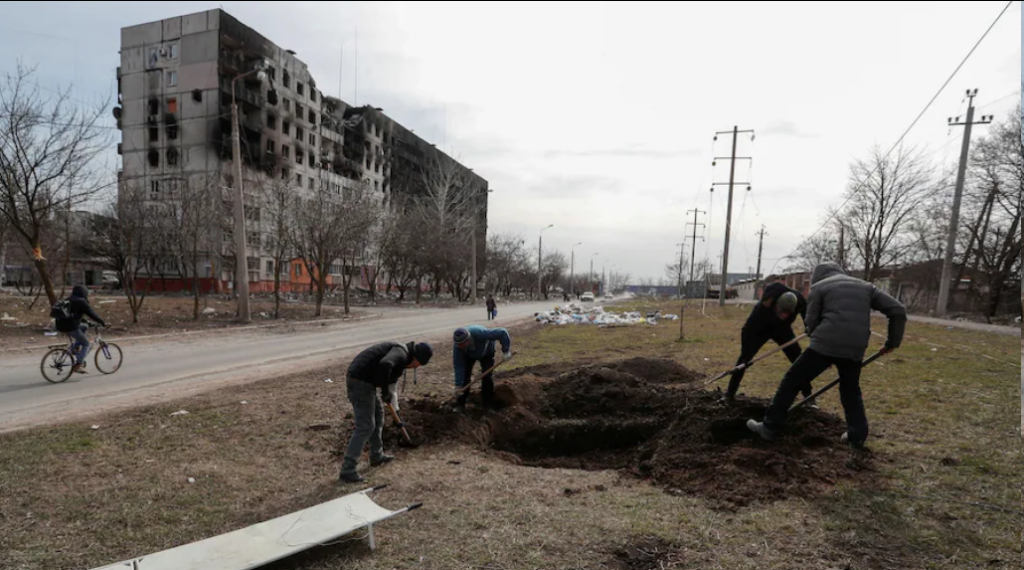
Moscow issued an ultimatum March 20: Ukrainian forces had to leave the besieged city of Mariupol or face further assaults and a “military tribunal.”
Ukraine flatly rejected the order to surrender the city, which has been battered by a Russian blockade and bombardments for nearly three weeks.
Here’s what to know about Mariupol and the humanitarian catastrophe happening there.
Russian troops ‘everywhere’ in Mariupol as art school sheltering 400 is bombed
Where is Mariupol?
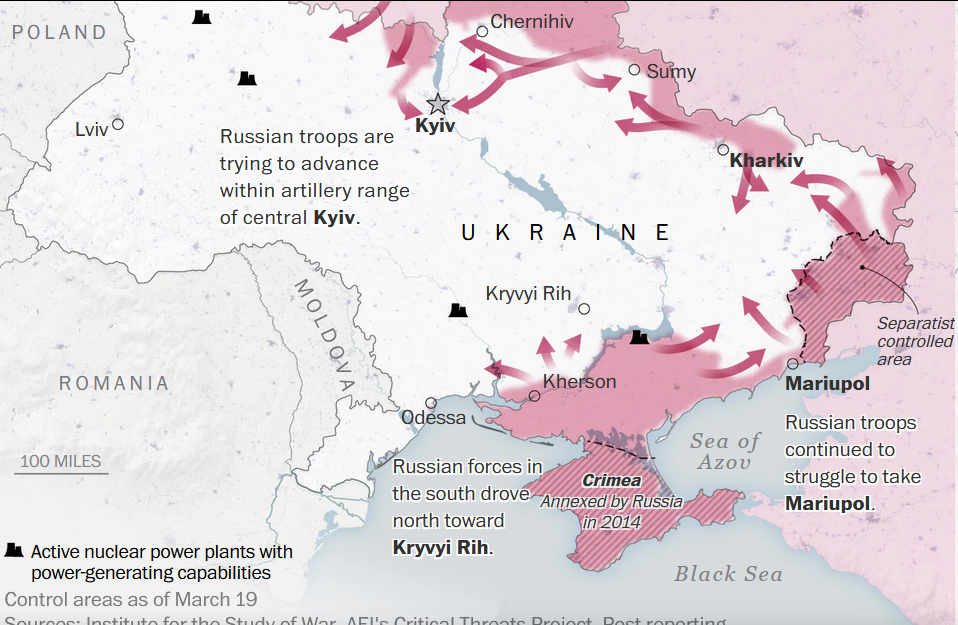
Mariupol is a Ukrainian port city on the Sea of Azov in the south of the Donetsk region. It was founded in the late 18th century and later became a center of industry, and is known for producing steel and other metals.
These days, it is strategically located between Russian-held Crimea and areas of eastern Ukraine held by Russian-backed separatists. Many of its residents speak Russian. Before the war, Mariupol had a population of about 430,000 people.
Why is Mariupol important to Russia?
Were Russia to capture the city, Mariupol would be Moscow’s first strategic victory in the war, and it would help free up troops for other Russian targets, such as seizing the capital, Kyiv. It would also give Russia a land corridor connecting territories under its control.
Russia’s siege of Mariupol a grim sign for other major Ukrainian cities
Ukrainian forces have battled for control of Mariupol before — back in 2014, after a Ukrainian uprising ousted Ukraine’s pro-Putin president and war broke out over eastern Ukraine between Kyiv and Moscow and its supporters. For several months that spring and summer, Russian-backed Donetsk separatists and Ukrainian government forces jostled for control. The separatists at times took control of Mariupol before it eventually returned fully to Ukraine.
The fighting, however, did not stop in other parts of Ukraine’s eastern Donbas region: An estimated 14,000 people died there between 2014 and Russia’s invasion on Feb. 24 of this year. (Russia also unilaterally annexed Crimea in 2014.)
What has been happening in Mariupol since the Russian invasion?
Early on in the war, Russian troops moved to encircle Mariupol. About one-quarter of residents fled.
The Russian military eventually cut off all food, electricity, medical supplies and communication networks as it constantly shelled the city, indiscriminately hitting everything from homes to schools to hospitals as residents stayed in bomb shelters for days at a time. Among the sites hit have been a hospital and its maternity ward, a theater where several hundred people were said to have taken shelter, and an art school where an additional 400 people were reportedly hiding underground.
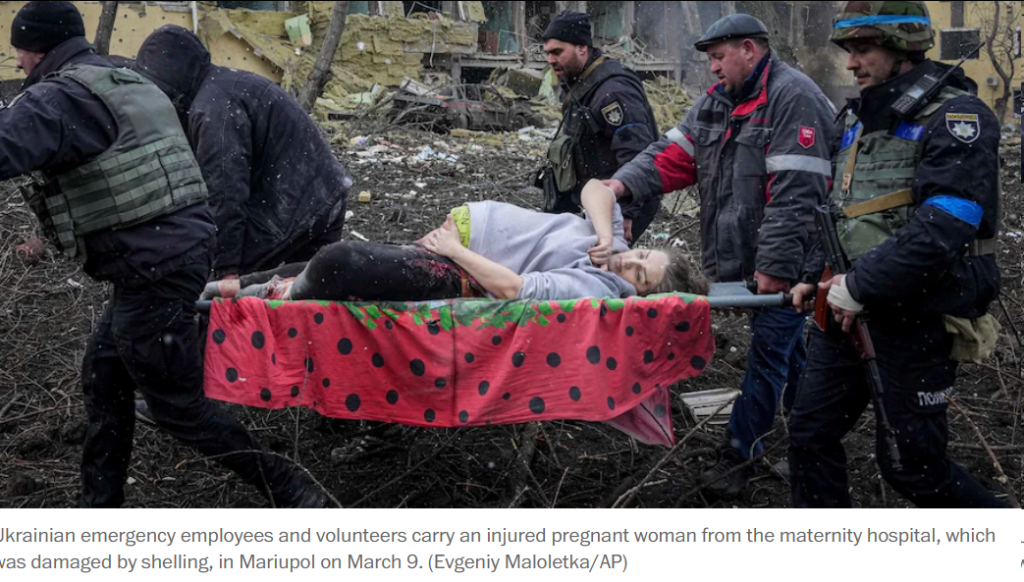
Ukraine said Russia prevented repeated requests for humanitarian aid into the blockaded city. Eventually, more than 4,000 people were able to leave through humanitarian corridors.
On March 13, the Mariupol local council said on its official Telegram that more than 2,100 residents had died in Russian attacks, a claim The Washington Post could not independently verify. The last two international journalists in the city, reporters with the Associated Press, were able to escape two days later as Russian forces pursued them.
Three weeks into the siege, Ukrainian forces defending Mariupol, which has included members of Ukraine’s far-right Azov Battalion, lost their grip. Russian troops entered all parts of the city. The street-by-street fighting and continued shelling prevented many residents from evacuating and others from conducting search-and-rescue missions after bombardments. Video shows devastation in Mariupol as Russian attacks continue
Why is Russia accused of committing war crimes in Mariupol?
Based on initial reports, the European Union’s top diplomat on March 21 accused Russia of committing “a massive war crime” in its assault on Mariupol.
“The city will be completely destroyed, and people are dying,” Josep Borrell, the E.U. foreign policy chief, told reporters.
What are war crimes — and could Russia be committing them in Ukraine?
Under international law, it is illegal to indiscriminately target civilians and besiege them during war. It is also illegal to target sites such as hospitals and to forcibly transfer populations.
A report published the same day by New York-based Human Rights Watch said the International Criminal Court, the United Nations and other jurisdictions “should investigate potential war crimes in Mariupol.”
New satellite imagery shows bombed-out Mariupol theater
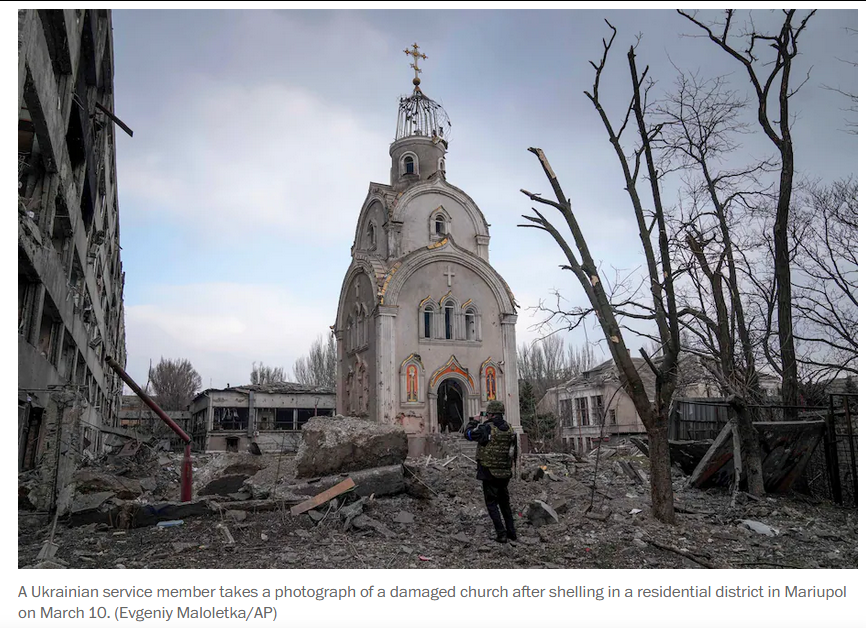
Human Rights Watch said that in interviews with 32 people who managed to escape the port city, many described seeing dead bodies strewn on the roads when they went outside in search of food, water or a phone signal. With the disruptions to phone lines, they could not talk to relatives, find out what was happening in the city or know whether they could safely evacuate.
“Mariupol residents have described a freezing hellscape riddled with dead bodies and destroyed buildings,” said Belkis Wille, a Human Rights Watch senior crisis and conflict researcher. “And these are the lucky ones who were able to escape, leaving behind thousands who are cut off from the world in the besieged city.”
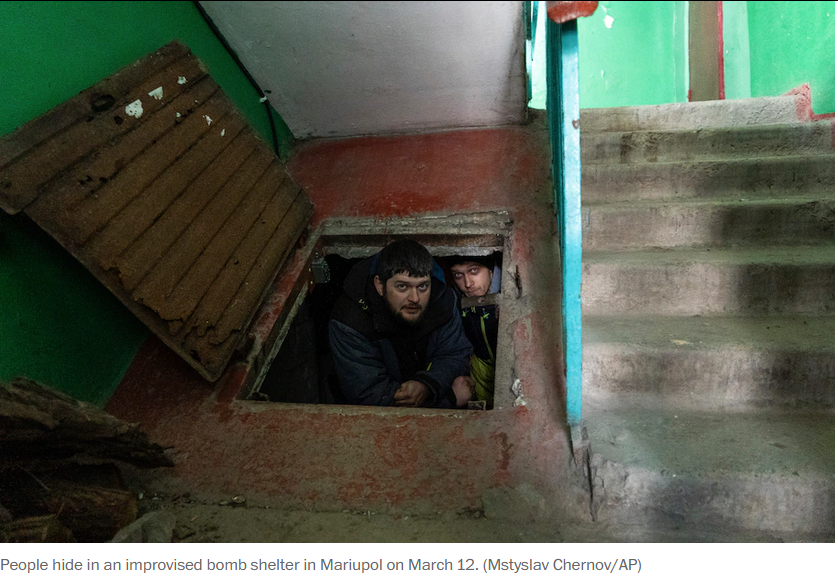
Evacuees who fled the city in a convoy in recent days drove through the front lines with windshields smashed, vehicles marked with white flags and signs reading “children.”
Mayor Vadym Boychenko told The Washington Post on March 19 that thousands of people who had been sheltering in a sports hall in Mariupol had been deported at gunpoint to Russia after Russian troops seized the area.
A woman whose family was in the hall told The Post on Sunday that Russian troops had entered and told people to leave. People fled in vehicles and on foot, she said. They were guided onto roads into Russian-held territory in Ukraine where her family remained, she said.
War in Ukraine: What you need to know
The latest: Ukraine’s deputy prime minister rejected the Kremlin’s call to surrender Mariupol amid widespread guerrilla warfare. The war has displaced nearly 1 in 4 people in Ukraine, including forcing more than 3 million Ukrainians to flee the country.
The fight: Russia — which has launched more than 1,000 missiles so far — is increasingly relying on “dumb” bombs to wear cities and civilians down. Russia’s assault on Ukraine has been extensive with strikes and attacks across the entire country, and Russia has been accused of committing war crimes.
The weapons: Ukraine is making use weapons like Javelin antitank missiles and Switchblade “kamikaze” drones from the United States and other allies to combat the superior numbers and heavier weaponry of the Russian military.
Oil prices: Sanctions on Russia are helping gas prices hit new highs. Here’s why — and how long the surge could last.
In Russia: Putin has locked down the flow of information within Russia, where the war isn’t even being called a war. “Information warriors” from around the world are working to penetrate Putin’s propaganda wall.
How you can help: Here are ways those in the U.S. can help support the Ukrainian people as well as what people around the world have been donating.
Read our full coverage of the Russia-Ukraine crisis. Are you on Telegram? Subscribe to our channel for updates and exclusive video.




